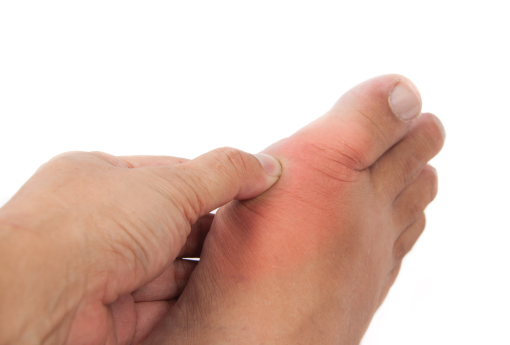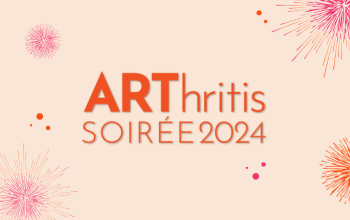The Arthritis Newsletter
Winter 2016An Interview with Dr. Hyon Choi
 In 2010 The International Journal of Clinical Practice called gout an “increasing international health concern”. Since then, research has shown that gout has been on the rise. We often think of gout as a pain in the big toe, but it is much more than that.
In 2010 The International Journal of Clinical Practice called gout an “increasing international health concern”. Since then, research has shown that gout has been on the rise. We often think of gout as a pain in the big toe, but it is much more than that.
Q: Can you give a brief description of the most common presentation and symptoms of gout?
Gout is a form of inflammatory arthritis that is caused by hyperuricemia (a high level of uric acid). The disease causes sudden, severe pain and swelling, often affecting the big toe, although it can affect any joint in the body. In addition to these painful attacks, if left untreated gout can progress to a chronic stage characterized by persistent pain and joint damage.
Q: How many Canadians have it and what are some of the causes that have been identified as responsible for this trend?
A study published by our research team found that nearly 4% of British Columbians have been diagnosed with gout as of 2012, which is a dramatic increase over the last decade. New research from our team found that the Western dietary pattern is associated with an increased risk of gout, which likely explains the rising gout trends seen in Western societies.
Q: Is there a profile of a ‘typical’ gout patient? Who is at risk, do genetics have a role?
The disease tends to occur more in males and obese individuals; however, females and non-obese individuals can also develop gout. For this reason, it’s important not to stereotype the condition! Family history is also a risk factor for developing gout.
Q: What is the difference in frequency of gout diagnosis between men and women? Do the symptoms present the same in women as in men?
Gout is generally known as a “male” disease, although it can affect females too! As of 2012, 5.2% of men and 2.4% of women had received a diagnosis of gout in British Columbia. Symptoms are generally the same in men and women.
Q: Why is proper treatment important? Can gout be cured? Are some cases harder to treat than others?
Proper treatment is important to prevent disabling gout attacks and avoid progression of the disease. This may lead to chronic and persistent pain, serious joint damage, and tophi (disfiguring lumps under the skin). Gout is the only form of inflammatory arthritis that can be “cured” with the use of urate-lowering therapy, a type of medication that reduces uric acid levels below the treatment target. Although most patients generally respond to treatment very well, some cases are harder to treat than others; these patients may require a different medication.
Q: What is new in the area of prevention and treatment of gout?
With regard to gout prevention, the Dietary Approaches to Stop Hypertension (DASH) diet, which emphasizes fruits, vegetables, low-fat dairy foods, and reduced saturated and total fat, substantially reduces blood pressure and is also recommended to prevent cardiovascular disease (CVD). A recent study by our team showed that the DASH diet is also associated with a lower risk of developing gout, and thus may provide an attractive preventive dietary approach for the risk of gout. With regard to treatment, there are a number of new medications and approaches available, such as combination therapy. These treatments may be more effective in certain people.
Q: Are there cases where gout can be managed without the use of medications?
Sometimes lifestyle modification can be sufficient to manage gout, although the exact proportion of patients who can be managed this way is unknown. However, it appears to be a minority of patients.
Q: Is there a link between gout and cardiovascular disease? Are any other diseases associated with gout?
Studies have shown that gout is associated with an increased risk of cardiovascular disease. On the other hand, studies also suggest that gout may be associated with a decreased risk of Alzheimer’s disease, which is very interesting.
Q: Are there good education resources that you can direct us to?
The Gout and Uric Acid Education Society is a great resource for both patients and providers (http://gouteducation.org/). We also have some great videos on the Arthritis Research Canada website and YouTube channel.
Possible links:
https://www.arthritisresearch.ca/videos/roar/2016-2
https://www.arthritisresearch.ca/virtual-gout-clinic
https://www.arthritisresearch.ca/a-new-colour-coded-imaging-method-to-diagnose-gout


























































